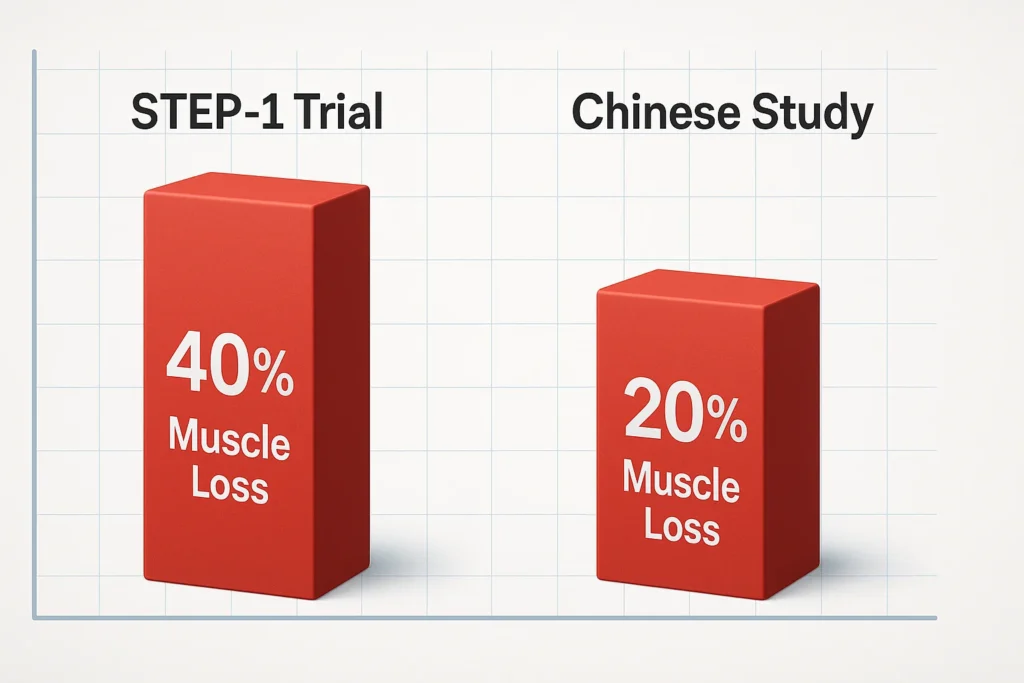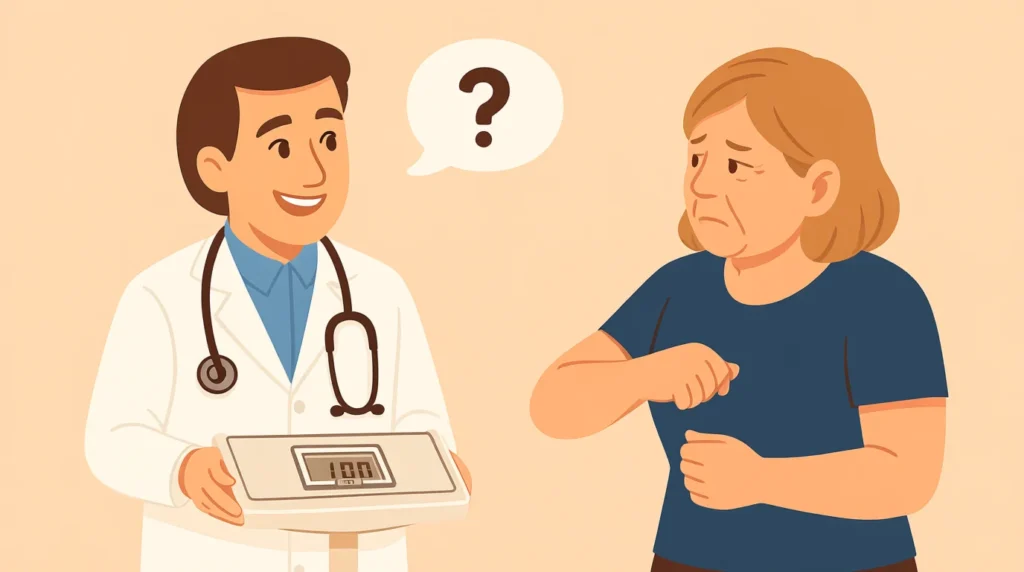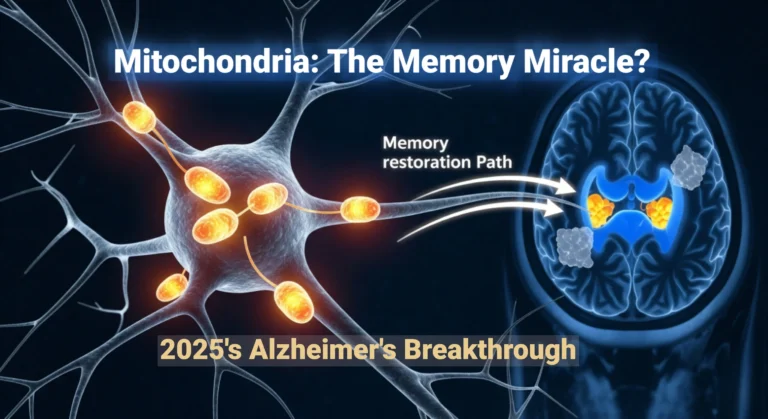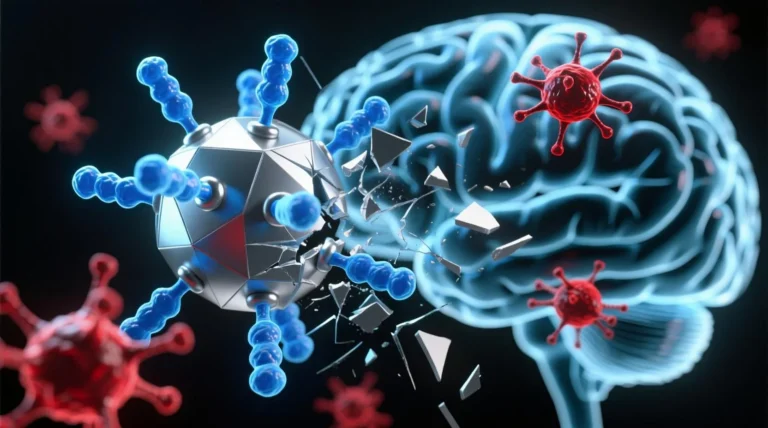Ozempic Muscle Loss: Real Data & 3 Ultimate Preventives
Don’t let your weight loss cost you your strength. Here’s the evidence-based strategy to protect your muscles.
Ozempic muscle loss: does it happen? Studies show 20-40% of weight loss can be lean mass. Learn the hidden risks of GLP-1 drugs and the proven strategies to protect your strength and metabolism for lasting health.
Table of Contents
If you’re taking Ozempic, Wegovy, or another GLP-1 agonist for weight loss, you’ve likely celebrated the number on the scale dropping. But a crucial, often overlooked question is: what are you actually losing?
Emerging clinical data reveals a hidden side effect: significant muscle loss. This isn’t just about aesthetics—losing muscle compromises your strength, metabolism, and long-term health.
This guide cuts through the social media hype to give you the evidence-based truth about Ozempic and muscle loss, and provides a clear action plan to ensure your weight loss journey makes you healthier and stronger, not weaker.
Does Ozempic Cause Muscle Loss? What the Science Says

Yes, Ozempic and other GLP-1 drugs can cause muscle loss. This happens because any rapid weight loss, whether from medication or strict dieting, forces the body to use its internal stores for energy—and this includes metabolically active muscle tissue.
However, the data isn’t as simple as a single scary number. The percentage of muscle lost varies significantly based on the individual and the study:
- The STEP-1 Trial (Semaglutide): Found that ~40% of total weight lost was lean body mass.
- A Smaller Chinese Study: Reported a much lower figure, with muscle mass accounting for ~20% of total loss.
- Other Data: Shows a wide range from less than 5% to over 40%, highlighting that age, protein intake, and physical activity are major factors.
The Bottom Line: Muscle loss is a real risk, but it is not inevitable. The variation in data proves your lifestyle choices play a huge role in determining the outcome.
The Bigger Problem: Loss of Strength (Not Just Size)
Perhaps more concerning than losing muscle size is losing muscle strength. A groundbreaking University of Utah mouse study found that muscles became weaker and lost force-generating capacity, even when the loss of mass itself was less than expected.
In humans, CT scans have shown a decrease in muscle attenuation—a sign of myosteatosis, where fat infiltrates muscle tissue, degrading its quality and function.
This means the number on the scale doesn’t tell the whole story. You could be losing weight but also becoming weaker and more frail, increasing your risk for:
- A 60% higher risk of falls
- Chronic pain
- A 2.5x higher risk of disability when combined with obesity
How to Prevent Ozempic Muscle Loss: 2 Critical Strategies
The solution isn’t to stop the medication; it’s to add a proactive plan to preserve muscle. An integrated approach of strategic nutrition and targeted exercise is non-negotiable for sustainable health.
1. Strategic Nutrition: Prioritize Protein
The intense appetite suppression from GLP-1s makes it hard to eat enough. Without adequate protein, your body cannot maintain muscle.
- Your Protein Goal: Aim for 1.2 – 1.6 grams of protein per kilogram of body weight (or ~0.7 grams per pound).
- What That Looks Like: A 150 lb person should target 82-105 grams of protein per day.
- How to Do It: Prioritize protein in every meal and snack. Eat smaller, more frequent meals to manage nausea.
Based on recommendations by UCHealth, AOCPM, JoinMidi, and Mather Hospital.

Top High-Protein Foods for GLP-1 Users
| Food Category | Excellent Choices |
|---|---|
| Lean Meats & Poultry | Chicken breast, turkey, lean beef, pork tenderloin |
| Fish & Seafood | Salmon, tuna, cod, shrimp |
| Eggs & Dairy | Eggs, Greek yogurt, cottage cheese |
| Plant-Based Proteins | Tofu, lentils, black beans, chickpeas |
| Supplements | Whey or plant-based protein powder (a easy way to hit goals) |
2. The Power of Resistance Training
Cardio is great for health, but resistance training is essential for building and keeping muscle. It stimulates muscle protein synthesis, directly fighting the breakdown caused by a calorie deficit.
- How Often: Start with 2-3 sessions per week.
- Focus: Compound movements that work multiple major muscle groups.
A sample resistance training protocol should focus on exercises that target major muscle groups and can be adapted for all fitness levels. A goal of two to three sessions per week is a great starting point, as suggested by Health.com and Hinge Health.
Sample Beginner-Friendly Workout
| Exercise | Target Muscles | Sets & Reps | Tip |
|---|---|---|---|
| Goblet Squats | Legs, Glutes, Core | 3 sets of 12 reps | Start with bodyweight, then add light weight. |
| Push-Ups | Chest, Shoulders | 3 sets of 10 reps | Do them on your knees or against a wall. |
| Rows | Back, Biceps | 3 sets of 10 reps | Use resistance bands or dumbbells. |
| Plank | Core | 3 holds for 30 sec | Build up your time gradually. |
The Long-Term View: Preventing Weight Regain
This isn’t just about strength—it’s about sustainability. Muscle is metabolically active tissue, meaning it burns calories even at rest.
If you lose significant muscle mass on Ozempic, your resting metabolic rate drops. This makes it drastically harder to keep the weight off once you stop the medication, often leading to rapid weight regain.
Building muscle is your best insurance policy against the dreaded “Ozempic rebound.”

FAQ: Ozempic Muscle Loss & Prevention
Q: Is muscle loss from Ozempic permanent?
A: Not necessarily. With proper strength training and adequate protein intake, you can rebuild lost muscle. The key is to start these habits while taking the medication to prevent significant loss in the first place.
Q: What’s the best protein shake for Ozempic?
A: Look for a high-quality whey, collagen, or plant-based powder with at least 20-25g of protein per serving and low sugar. It’s a convenient tool to meet your daily goals when you’re not hungry enough for whole food.
Q: Should seniors on Ozempic be more concerned?
A: Yes. Adults over 60 are already at a higher baseline risk for age-related muscle loss (sarcopenia). Preserving functional strength is critical for their mobility and independence. The strategies above are especially important for this group.
The Final Word: Beyond the Scale
GLP-1 medications are powerful tools, but they are not magic bullets. True success is measured not just in pounds lost, but in functional strength, metabolic health, and longevity.
Work with your doctor to build a plan that includes nutritional guidance and physical activity. The goal isn’t just to be lighter; it’s to be capable, resilient, and healthy for the long run.
Explore Related Science Breakthroughs
While managing muscle mass is key to metabolic health, our research covers other groundbreaking medical advances. Explore our latest findings on how new research is reversing memory loss and the development of an opioid vaccine using nanoparticle technology.
Disclaimer: The information contained in this article is for educational and informational purposes only and is not intended as medical advice. It is not a substitute for professional medical advice, diagnosis, or treatment. Always seek the advice of your physician or other qualified health provider with any questions you may have regarding a medical condition, weight loss, or before starting any new medication or exercise regimen. Never disregard professional medical advice or delay in seeking it because of something you have read on this website.
The views expressed herein are not the opinions of InSciLab.Tech. If any statement is perceived as an opinion, please consider it unintentional and coincidental. All facts presented are based on published research, clinical studies, and news reports from credible sources. The most significant sources have been cited and linked within the article for transparency.
The mention of specific medications (e.g., Ozempic, Wegovy, semaglutide) is for informational reference only and does not constitute an endorsement or recommendation. Always follow the prescribed guidance of your healthcare provider.
The author and InSciLab.Tech are not responsible for any actions taken based on the information provided herein.




2 Comments